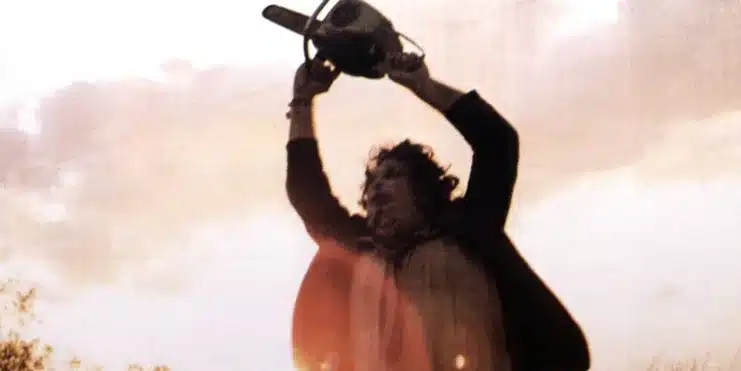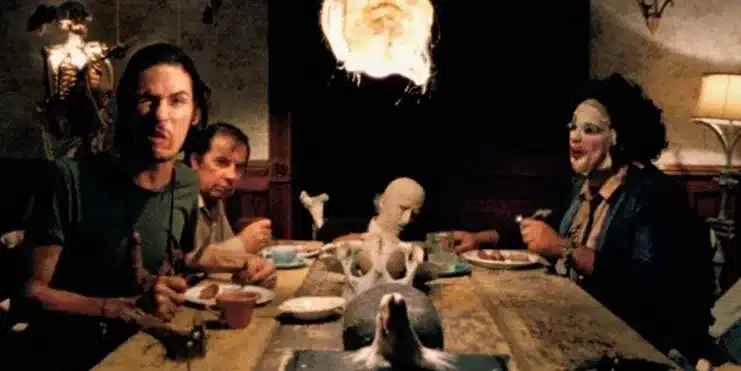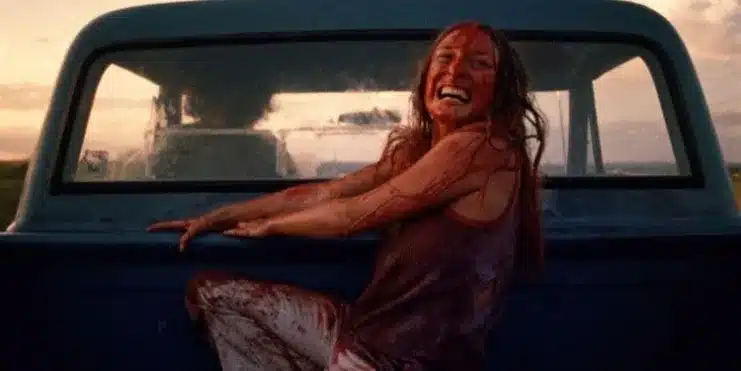The horror classic, The Texas Chainsaw Massacre, pushed its filmmakers to the limits between visceral warmth and endless danger.
Imagine it’s summer in Texas, where the thermometer reaches 45 degrees Celsius. Now, filming one of the horror movies, “The Texas Chainsaw Massacre,” he imagines a film crew immersed in an environment associated with fatigue, unhealthy environments. As the creator of this masterpiece revealed to millions of viewers, the plot was terrifying. Today, half a century after its debut, we show its creators overcoming hardships and tragedies with sacrifice, ingenuity and utter madness.

Hell behind the camera
Directed by Tobe Hooper, “The Texas Chainsaw Massacre” not only reinvented the horror genre, but the extreme conditions in which it was filmed became legendary. In July 1973, the heat became another character in the story, as the Victorian house became home to Leatherface and his macabre family, reaching up to 46°C inside. The atmosphere became unbearable, especially when the actual animal corpses were added; This created a nauseating smell, forcing the group to run to the windows for a break.
His dedication to accuracy didn’t stop in the face of bad weather or a budget of less than $140,000. The actors face 12- to 16-hour days, seven days a week, in an environment that challenges their physical and mental endurance, always wearing the same clothes. Gunnar Hansen, who played Laserface, had to wear the same unwashed suit during filming, a decision that contributed to the character’s authenticity while showing the level of commitment (and pain) involved in the production.


A legacy of horror and survival
Physical injuries and emotional challenges were constant for players. The film’s final heroine, Marilyn Burns, captures terror in real terms, being beaten and forced to scream for hours. The dinner scene was one of the most harrowing aspects of the marathon, filmed in searing temperatures for 26 hours, exacerbated by tar paper covering the windows.
Despite the circumstances, the team managed to capture an atmosphere of horror beyond the screen, helping make “The Texas Chainsaw Massacre” a milestone in horror cinema. The director of photography, Daniel Pearl, explained that the pain he experienced during filming translated well into the film, creating an immersive experience for the viewer that could not be achieved in a comfortable environment.
An echo in the culture of terror
“The Texas Chainsaw Massacre” helped pave the way for the slasher genre and introduced the first examples of the “final girl” trope with Sally Hardisty, but its influence spanned decades, inspiring works like the T-West X trilogy. Despite the difficulties, the film stands as a masterpiece that redefines horror, showing that sometimes the most memorable stories come out of the worst situations.


As we celebrate its 50th anniversary, “The Texas Chainsaw Massacre” remains a testament to the power of cinema to transport us to terrifying realities. Ours. Available for free on Tubi in the United States, this classic invites us to ponder the limits of art, human resistance, and the unwavering desire to tell stories that endure through time.